What constitutes political risk for companies is changing fast. Henry Wilkinson, Chief Intelligence Officer at Dragonfly, explores the challenges and lessons for business leaders.
To paraphrase an old and often misattributed saying about war: You may not be interested in geopolitics, but geopolitics is interested in you. For global business leaders this is probably truer now than ever.
Demand for geopolitical risk analysis is surging among businesses, many of whom have not placed much importance on it until now. But managing political risks effectively not only requires the right kind of data, intelligence and analysis, which can be hard to get right. It also requires a political risk management strategy that recognises and is able to adapt to how much political risks are changing.
The war in Ukraine and the Covid-19 pandemic, with their many second- and third-order effects, have thrust geopolitical risks to the top of many companies’ risk agendas. Many businesses are now playing catch-up, particularly those in sectors or markets that have historically been less exposed to political risks.
And based on our experience with clients, many are urgently looking to understand what the long-term outlook is for the volatility we are seeing today, and what they can do about it.
The nature of risk is changing for businesses
This is a complex task, and not just because there is so much volatility globally. It’s also because the nature of politics and its relationship with business risks is fast evolving. Emerging political risk trends are increasingly converging with other risks and are not easily compartmentalised into discrete risk management functions.
Political risks today permeate and shape nearly every other risk, be it strategic, market, supply chain, legal, regulatory, security, cyber, environmental, climatic, governance, ethical, human or reputational. This means that owners and managers of different risks within an enterprise need to collaborate more closely than ever before with practitioners from different risk and governance disciplines. They need to share intelligence and data while learning and applying best practices from each other.
In a geopolitical landscape as unstable as the one we are now dealing with, the requirement for holistic, multi-disciplinary risk management with top-level strategic engagement is not going away any time soon. At least, not if success and growth strategies are to succeed.
Recognising and fixing failure
The world faces a degree of geopolitical risk and uncertainty that is unprecedented since the end of the Cold War or, I would argue, since the 1930s. Major interstate war, which was almost unthinkable until recently, is now more widely recognised as a real and indeed present threat in the international system. But the risk has in fact been growing for years.
The failure of markets and many business leaders to grasp the seriousness of the threat of the Russian invasion was plainly evident, even just by judging activity on stock markets before and after the invasion. This seems to largely speak to a reluctance to accept that war with such mutually damaging impacts was likely. This was despite repeated and growing warnings of Putin’s strategic intentions from specialist intelligence advisors like Dragonfly and US and UK intelligence agencies. (See our Strategic Outlook 2022, published in 2021, where we warned of a critical risk of a Russian invasion of Ukraine.)
Indeed some of our clients in global firms, many of whom are intelligence professionals, reported deep scepticism of such warnings among their internal senior audiences, even as Russian forces massed near the Ukranain border. The common assumption, it seems, was that the immense costs of war would benefit no one.
Two challenges for businesses grappling with political risk
Herein lie two key challenges and lessons for businesses seeking to get to grips with political risks, particularly high-stakes geopolitical risks like wars.
The first is that many accomplished business leaders consume the news, have informed and intelligent opinions about geopolitics and are naturally inclined to reach their own judgments. But this is no substitute for a skilled, expert professional assessment. Decision-makers should never do their own intelligence analysis, any more than a patient should do their own diagnosis. To be well advised means to trust your advisors, particularly on matters that are as widely opined on as high politics.
The second is recognising that assumptions about reasonable political behaviours and interests, and economic and cost-benefit analysis, serve well in a liberal economic and rules-based environment. But it is a weak framework to assess strategic intent and risks in an emerging multipolar world order. Even more so in one where illiberal ideologies and hard power outrank economic incentives and sanctions.
Market instability ahead
The Russian invasion of Ukraine marked a major inflexion point in geopolitical risk. But it was an almost inevitable outcome of a long-term erosion of multilateralism, and the rise of multiple competing power blocs and forms of governance.
Rising authoritarian powers have challenged and sought to undermine liberalism, international norms and institutions, and democratic governance for years. Meanwhile, Western countries, mired in disunity and lacking real international leadership and strategic coherence, have failed to uphold them.
The rallying of the West in response to Vladimir Putin’s war, and the robustness of sanctions by the United States and the European Union, also took many by surprise. But unless the Western alliance of democratic nations can find and sustain a new and purposeful long-term strategy, being steadfast against Russia will not be enough.
Curbing wider volatility will require rolling back years of waning economic and political influence globally, particularly in emerging and frontier markets. It will also be necessary to counter sustained, self-interested efforts of rising illiberal powers, not least China, to reshape the global order in their favour and promote autocratic governance.
Even if the United States and its allies are able to develop a cohesive strategy to reassert the rules-based global order, the outlook for the next few years still looks likely to be one of ongoing instability and compounding risks. And beset by economic crises and sustained inflationary pressures, global risks that demand multilateral responses – such as climate change, public health, poverty and conflict resolution – are less likely to be effectively managed.
The disjointed and often unilateral and self-interested response of many states to the Covid-19 pandemic, which almost certainly amplified and prolonged its impacts, shows clearly the consequences and reality of the problem. All of which threatens to perpetuate the material impacts of global risks and render yet more instability in markets and jurisdictions worldwide in a volatile feedback loop.
The next crisis
One of the most common scenario analysis taskings we get at Dragonfly lately concerns the risk of a conflict over Taiwan as Beijing looks to assert political control over the island. China’s strategic ambitions and deepening US-China competition is one of the most important major drivers of geopolitical risk, notwithstanding the destabilising policies of the Russian government in Ukraine.
The lockdown of Shanghai this year and its impact on global supply chains gives but a glimpse of the wider impact that a major crisis scenario over Taiwan could cause. But these are other equally important political risks in this broader geopolitical landscape.
One that should be at the top of any strategic risk agenda is the spread and entrenchment of authoritarian governance. This key trend arguably creates the greatest of political risk challenges at scale, because it drives up so many other more specific political risks and limits the means to manage them.
Indeed, of the many impacts of the Covid-19 pandemic, perhaps the most significant in political risk terms was to sharply accelerate a long-term, worldwide decline of democratic governance. Authoritarian governments and those leaning towards illiberalism seized upon the pandemic to impose restrictions on civil liberties, persecute opponents, limit protests, delay elections, and introduce new mass surveillance technologies and laws.
Democracies in decline
Even in more mature democracies, we have seen democratic governance and freedoms decline. From a business risk perspective, this is liable to drive up political risks in more countries, even in some developed economies and more mature democracies, with India perhaps the most prolific example.
The consequences of this authoritarian shift are greater censorship, poorer governance standards, corruption and nepotism, weakening civil and human rights, greater social and economic equality, weak if not harmful environmental policies, and greater discontent.
It is more likely to increase the kinds of traditional political risks businesses are familiar with and can insure against. These include the nationalisation, confiscation or expropriation of assets, arbitrary changes in regulations, taxes, labour and land laws, tariffs, currency valuation and convertibility, and political violence such as war, civil disorder and terrorism.
But greater authoritarianism is also likely to yield more brittle and hollowed-out systems of government. These are more prone to collapse or violent transfers of power when under pressure – particularly if popular grievances erupt. And erupt they almost certainly will with greater scale and intensity, as high food and fuel prices drive discontent.
Major political unrest and instability are historically the main causes of supply chain disruption, notwithstanding public health controls such as lockdowns. And with diminishing means to address such issues, the reasonably foreseeable response of many governments is a cycle of yet more control and suppression.
A difficult balancing act for businesses
Another shift that is equally important is that of more novel conceptions of political risk presenting real challenges to businesses.
Global businesses are increasingly likely to be caught between political forces in ways we have not seen in years. The risks stem partly from geopolitical issues, such as the US-China trade war and tension between Russia and European nations, as well as regional tensions and domestic instability disrupting international markets and supply chains.
But it also stems from the rise of new ideologies and populism, and rising anxieties and divisions over contentious issues as wide-ranging as climate change, human rights, racial and ethnic discrimination, religious freedoms, freedom of speech, migration, abortion, gender and sexual orientation discrimination, gun ownership and online privacy.
As a result of these kinds of issues, an ever-growing number of countries are affected by culture wars, political polarisation and degradation in the standard of public discourse. The divisions and issues cut through workforces and markets. They represent new forms of political risk, forcing many businesses out of ostensible neutrality, while often attracting activism, cyber threats and even personal security risks to business leaders.
Businesses are at a growing risk of being drawn into ever more difficult positions. They may be forced to balance relations with governments while managing data security, reputational, ESG and security risk concerns caused by those very same governments. And as more governments drift away from democratic governance, businesses face a difficult balancing act between remaining true to the values that increasingly define corporate identity and brands, and the need to do business and find growth in markets where those values are compromised.
The crackdown on the pro-democracy movement in Hong Kong services is a powerful warning of what can happen. Global businesses were caught between the pro-democracy civic activism of their employees and pressure from the authorities on employers to contain such activism.
How businesses can navigate changing political risk
If the trends forecast above hold true, businesses will need to pretty urgently find strategies that enable them to navigate these issues. They must ensure they are able to monitor and assess how markets are changing, and what their risk tolerances are to such scenarios.
All I’ve said here is merely scratching the surface of the new political risk landscape. It would be impossible to outline all the risks and the scenarios. The message is rather and more simply one of cautionary advice: The political risks of today and tomorrow are not the same as they were yesterday, and should not be assumed otherwise.
In all the assessments we as Dragonfly can make, the overall global outlook is sufficiently negative to say that a holistic political risk strategy and capability is an essential investment. Whether your domain is strategy, government relations, security, cyber, compliance, ESG, brand, reputational, or market risk, political risks are now your and everyone else’s business.
Dragonfly’s Advisory team can help your business navigate political risk by delivering bespoke intelligence reports on the greatest threats you face. Whether you’re looking to explore changes in your sector, risks in a particular market, or the future of a geopolitical trend that affects your business, we can work with you to deliver tailored solutions.
Find out more about how our Advisory service can help your organisation navigate political risk.
Henry Wilkinson, Chief Intelligence Officer at Dragonfly, has been identified as a leading expert for Global-wide Political Risk in Chambers and Partners Crisis & Risks Management Guide 2022.





